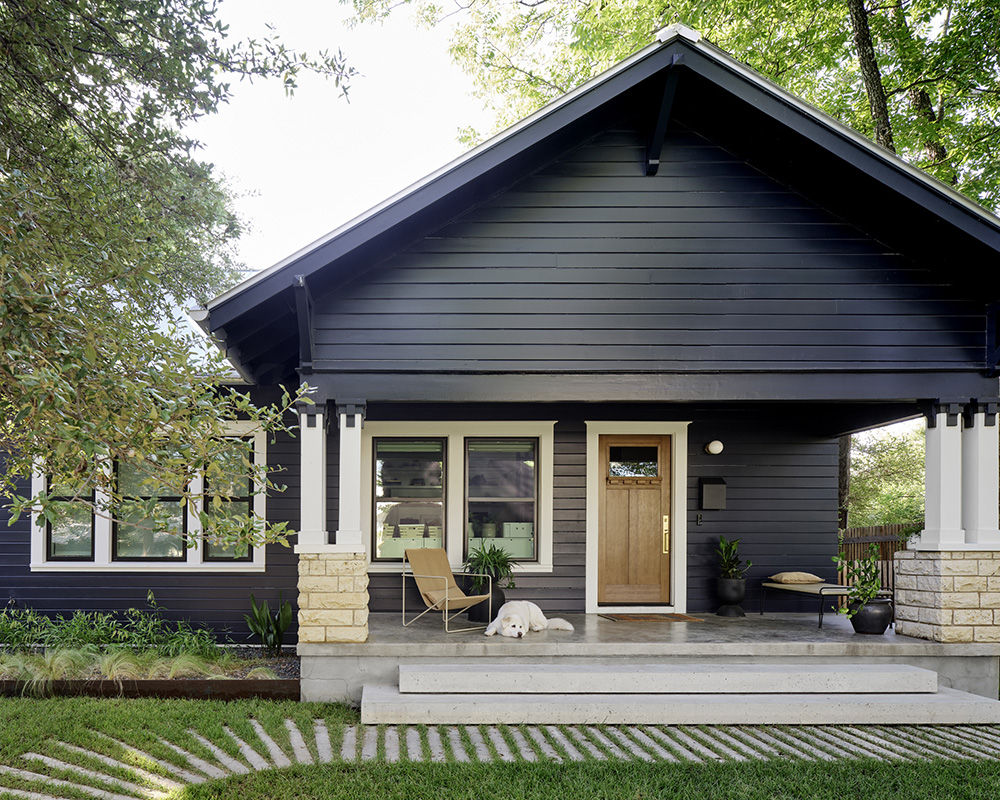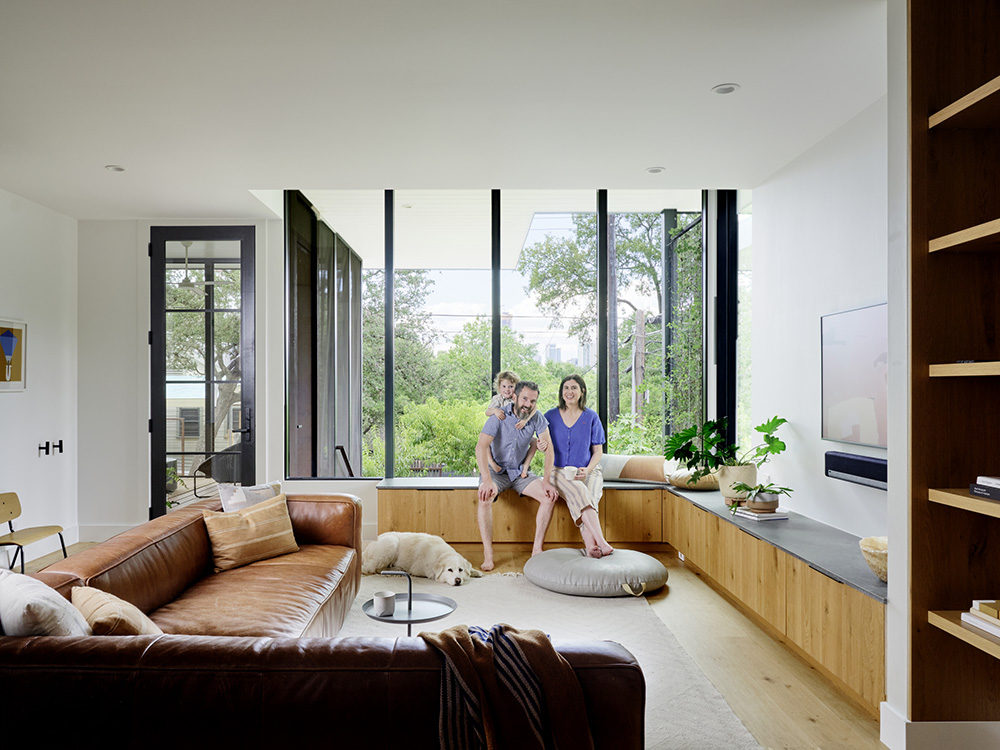Net-Zero Hero: Trey Farmer
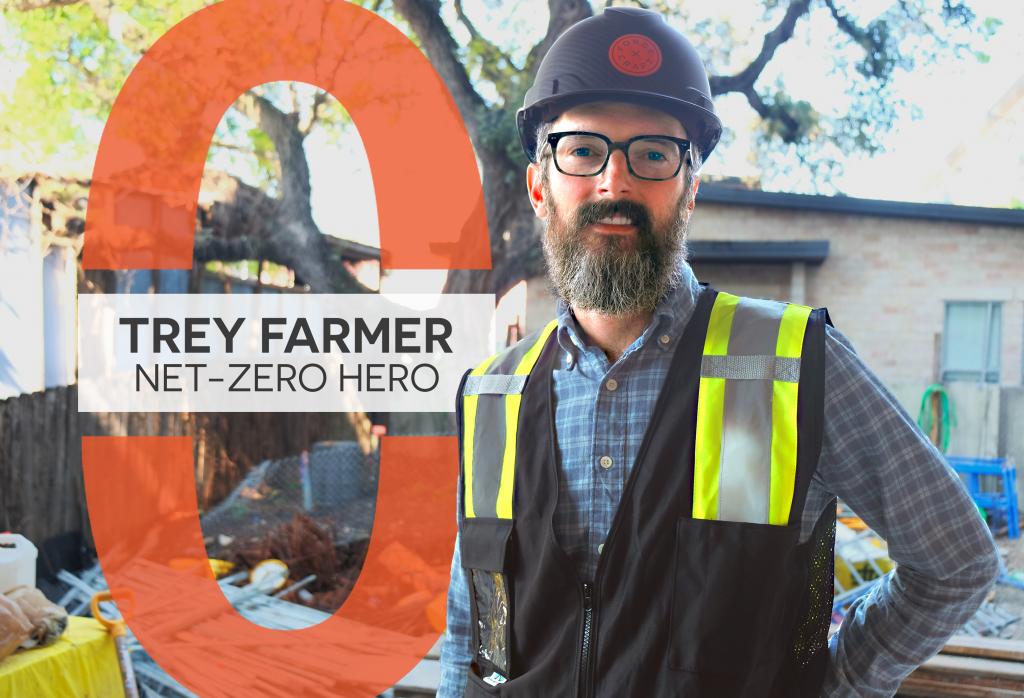
I’m helping to make Austin Net-Zero by showing there is a better way to build.
This October, the Austin Chapter of the American Institute of Architects (AIA) will host its annual Homes Tour. Local architect, sustainability advocate, and our newest Net-Zero Hero, Trey Farmer, will be one of the Austinites showcasing their home on the tour. Trey works with local firm Forge Craft Architecture + Design and is a LEED Accredited Professional, Certified Passive House Consultant, and serves as a member of the Austin Passive House Alliance Board and the national Passive House Institute Alliance Council.
We visited Trey at the Forge Craft Architecture + Design studios and traveled to one of Forge Craft’s current projects to discuss his work, renovating his own 100-year-old home, and the future of green building
What inspired you to take action?
Working in the built environment, I get to see so many amazing examples of people pushing into new territories.
Fifteen years ago, I worked for an architect in Berkeley, California, doing some of the first LEED-certified projects in the United States. During that time, I was also introduced to the concept of creating a Passive House, natural building, permaculture, and the Living Building Challenge. The idea that our buildings and infrastructure can have a net positive impact on the planet was so exciting and inspiring.
With these design principles in mind, I realized humans have the ability to create a net gain — to actually enhance ecosystems for all life, not just our own. BUT — and it’s a big but — this is contrary to much of the way we currently live, farm, build, and move around. We need to change the way we do things pretty dramatically.
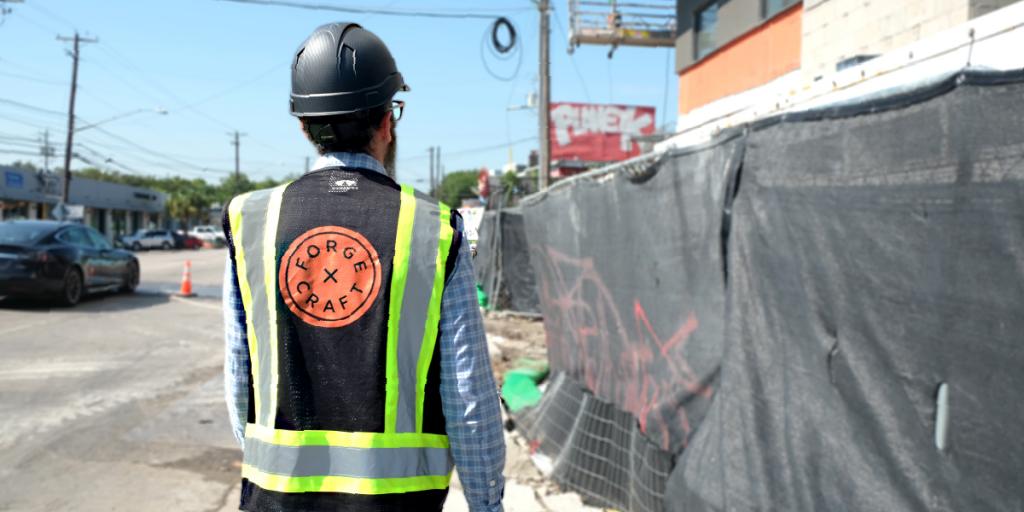
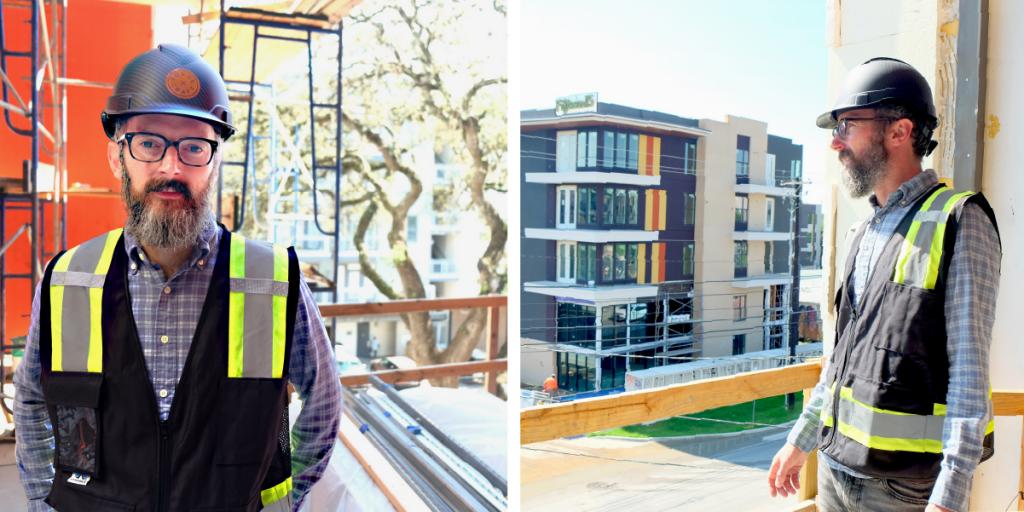 Trey visits a Forge Craft build site on South Lamar. The project will create hundreds of affordable housing units for Foundation Communities, a local nonprofit.
Trey visits a Forge Craft build site on South Lamar. The project will create hundreds of affordable housing units for Foundation Communities, a local nonprofit.
How did you do it?
A few years ago, my wife and I had the opportunity to do a major renovation of our 100-year-old craftsman home in Austin. She is an interior designer with Studio Ferme, focusing on healthy materials and spaces. I am an architect with Forge Craft Architecture + Design with a specialty in healthy and energy-efficient building. The renovation was the perfect chance to put our skills and convictions to the test while creating a case-study home that could help show that even older homes can be beautiful, healthy, and energy-efficient without breaking the bank. We brought in our friend, architect Hugh Jefferson Randolph, to collaborate on the project with us. We decided to certify the home with Passive House Institute US (PHIUS) and Austin Energy Green Building.
Passive House is the world’s most rigorous energy-focused building standard. Using a robust, third-party-verified energy model, we were able to test out different levels of insulation for the walls, floors, and roof. We also tested double- versus triple-pane windows, HVAC system options, and design iterations, such as home size, location of windows and overhangs, and more. We wanted to see what gave us the most benefit from the standpoints of comfort, construction cost, and operational energy cost.
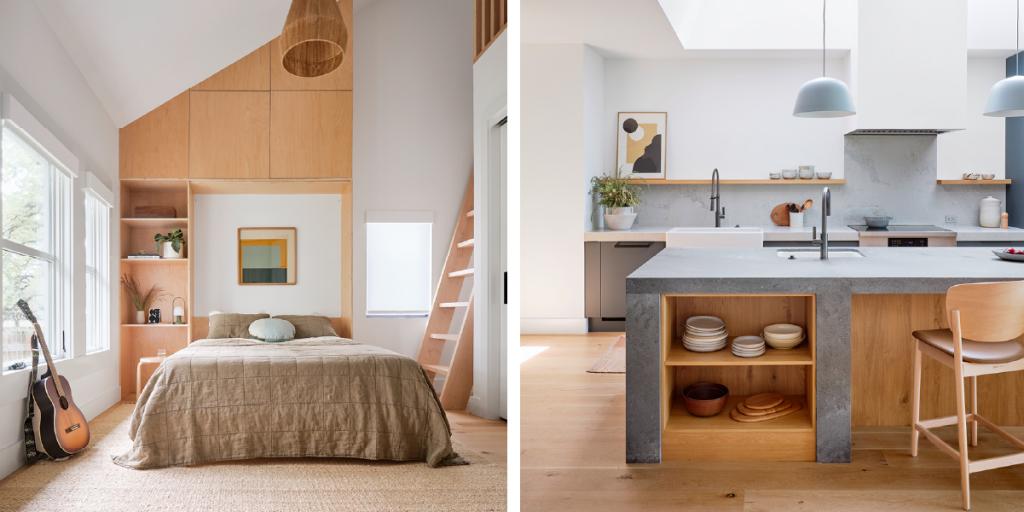
Photos of the interior of Trey’s home. Photos by Leonid Furmansky
In the end, we created a home that uses about half the energy of a comparable new home. We were then able to fit enough solar panels on the roof that, with the reduced energy use, our home became net-positive and is able to produce more energy than it consumes over the course of a year. Our home feels comfortable in even the most extreme weather and has incredible indoor air quality because no unfiltered air can get in (think oak pollen and highway dust).
We moved into the home about a year before the winter storms of 2021 hit, and despite losing power for three days and having single-digit temperatures outside, our home stayed liveable.
Now we have been able to bring these lessons learned into our professional practices and use the house as a teaching tool. Forge Craft Architecture is working on more Passive House projects, and we have been able to shift our single-family home studio to a path of creating all healthy, sustainable houses that create more energy than they consume. We have also brought these lessons to our commercial work and do in-house energy modeling and cost optimization, as well as healthy material selections.
Above: The Farmer family house. Below: Trey with his family inside their home. Photos by Leonid Furmansky
What’s been most rewarding about getting involved in this way?
The community around us has been incredible. We shared what we were working on with our friends and fellow sustainable design geeks early and often, starting with design and continuing through construction and now during occupancy. It has been a lot of fun learning from experts and making friends along the way.
During construction, the house hosted over a dozen happy hours, open houses, training workshops, tours, and student groups. Throughout the process, we have tried to share what worked, what didn’t, what we love about it, and what we would do differently next time.
Now, there are even UT researchers studying the home’s performance.
In October, the house will be open to the public as part of the AIA Homes Tour, so please come check it out and learn more. We would love to show you around.
What’s been the toughest part?
It can be frustrating knowing that there is a better way to build and not seeing this knowledge more quickly and broadly adopted across the architecture, design, and construction industries.
We also love the house so much that we are itching to do another one. We want to push things even further and integrate the lessons we learned to see what is possible.
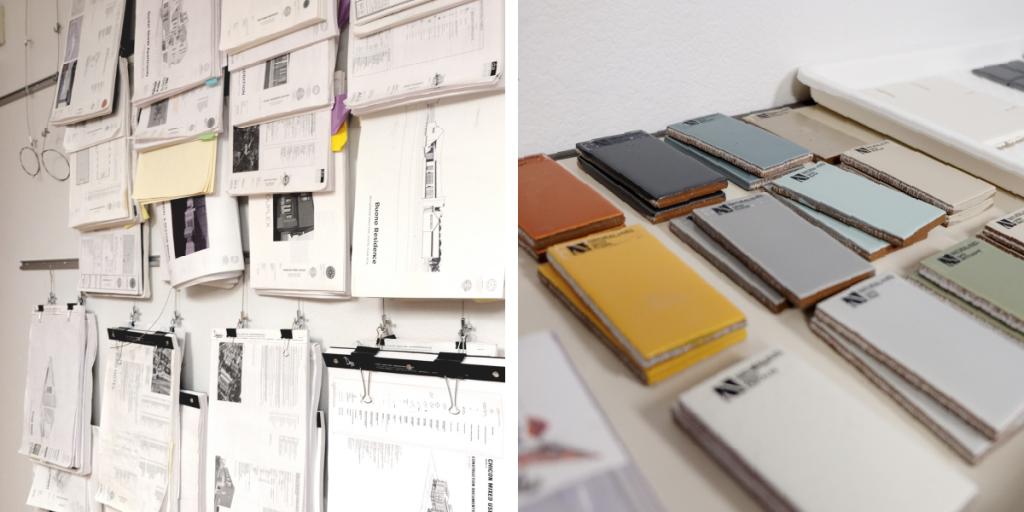
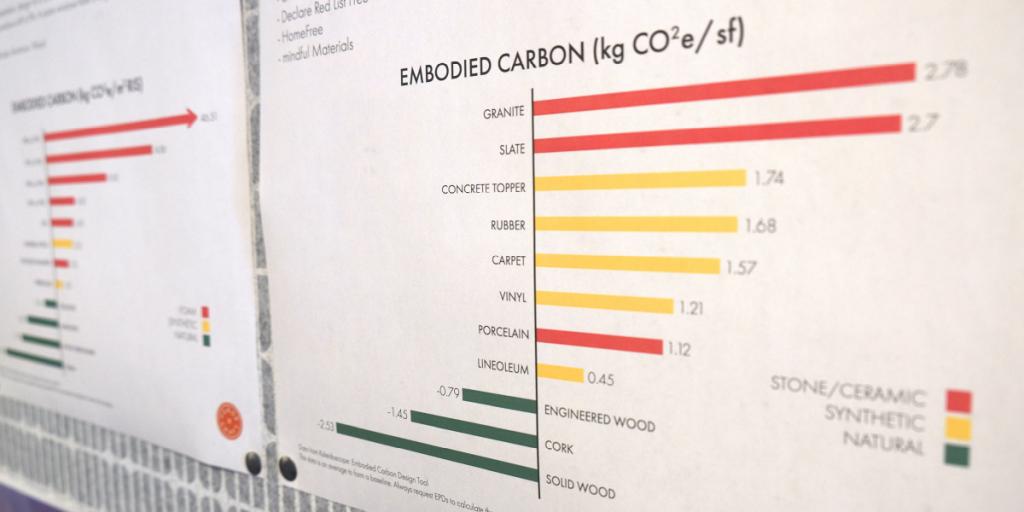
Above left: Plans hang on a wall in the Forge Craft Architecture studio. Above right: Tile samples laid out. Below: Embodied carbon measurements for Forge Craft Architecture & Design buildings are displayed on a wall in the studio.
There have been many advances in green building in the past years. As you look forward, what is most exciting to you about the future of this field?
The merging of natural building and high-performance building. Strawbale, hemp, adobe, and rammed earth designs are one niche, while passive house, net-zero, and high-performance buildings are another. Both are happily becoming more mainstream. We need homes and offices made from natural, non-toxic materials that produce more energy than they consume. We have the power to create healthy, beautiful, comfortable places that don’t pollute our environments.
These ideas are gaining traction and market share, which means they are becoming less boutique and less expensive. The price of solar panels has come down from over $100 per watt in 1976 to less than 25 cents per watt today, falling further every year. I think about electric car options today versus just 10 years ago. The same is happening with buildings — the number of certified passive house units and square footage is more than doubling every two years.
We have the knowledge and the technology to make our buildings part of the climate solution.
Is there a book, documentary, or other piece of media you would recommend for folks wanting to learn more about these topics?
Passive House Accelerator is a great platform for learning about high-performance building and climate solutions. They have articles, videos, weekly happy hours, webinars, and profiles of projects from around the world.
Their Putting the Punk in Passive House video series is a great place to start.
In the book Build Beyond Zero, Bruce King and Chris Magwood re-envision buildings as one of our most practical and affordable climate solutions instead of being one of the leading drivers of climate change.
What advice do you have for others?
Get involved in whatever way you can. We all have a voice and leverage. Ask your local grocery store if they have solar panels, or tell the car dealership you want more electric vehicle options to look at.
If you are building a house, ask your architect and builder about passive house, low-carbon building materials, and how to create a healthy environment for your family. If you are buying, building, designing, renting, or just visiting a home, ask about the blower door score, which describes how airtight a home is. The more renters, homeowners, builders, realtors, and architects ask about these things, the more they will start to become the norm.
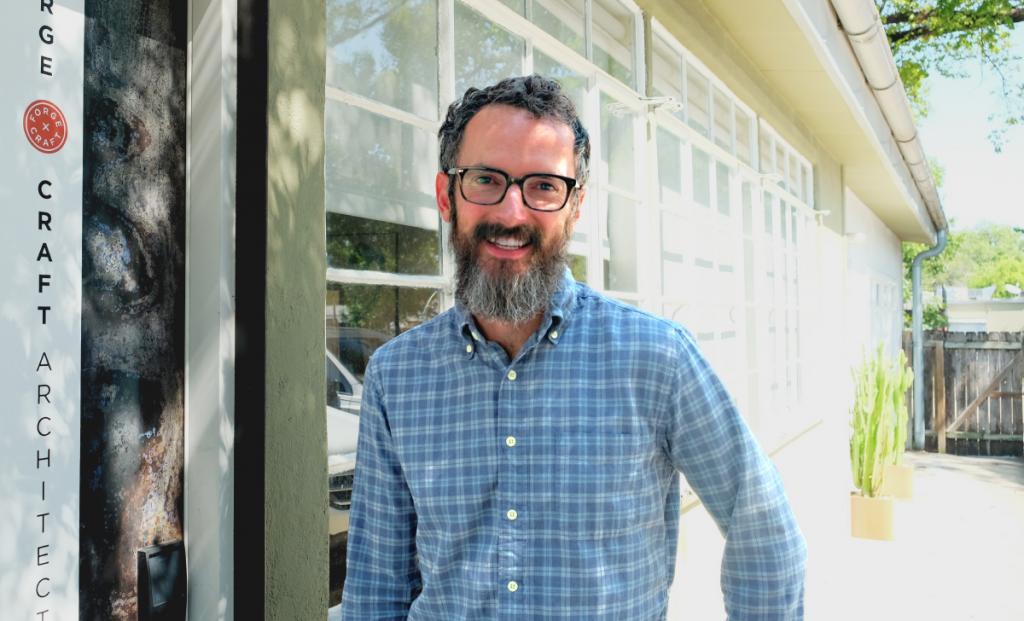
Learn more about the 2022 AIA Homes Tour, happening October 22-23, 2022, to visit Trey’s home.
Sustainable buildings are a key element of Austin’s net-zero future. To learn more about Austin's net-zero goal and explore actions you can take to support a greener community, view the Austin Climate Equity Plan
Share your Net-Zero contributions with us on X (formerly Twitter) or Facebook, and use #NetZeroHero. If you know a Net-Zero Hero (or heroes!) who should be recognized for their efforts, send your nomination to climate@austintexas.gov.


